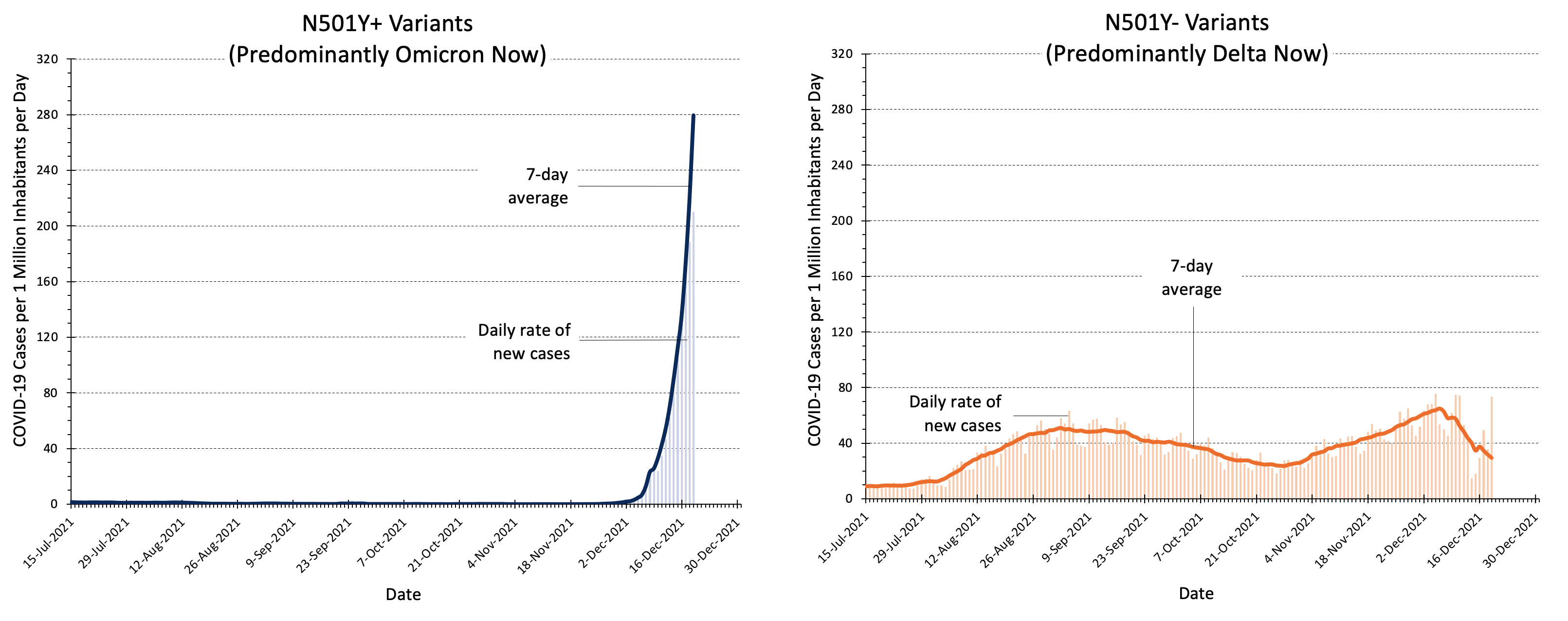Ontario’s Medical Director of Health says the province is in “exponential” growth when it comes to the Omicron variant, but hospitalization rates remain stable ahead of the expected holiday gatherings.
Dr. Kieran moore says Omicron’s hospitalization rate in Ontario is currently 0.15 percent. None of the 165 patients currently in the ICU throughout the province is infected with the variant. That mark is significantly lower than the province’s overall COVID-19 hospitalization rate.
However, that doesn’t mean it won’t change. Moore cautions that this count is a particularly younger population than the province as a whole, primarily in the 20 to 30 age range, a demographic that has been shown to be at a lower risk of experiencing severe symptoms from the virus.
Despite the relatively positive outlook on how the variant is currently affecting the healthcare system, Moore says the Omicron surge affects the province’s ability to provide the necessary testing capacity.
“Increased demand makes timely testing more difficult to access, and people seeking testing appointments may experience longer wait times in certain parts of the province,” he said.
The chief physician believes Ontario will soon see the most COVID-19 cases per day since the start of the pandemic.
“Hospitalizations have increased by 9 percent in the last week, and while ICU occupancy remains stable, we anticipate that in the coming days and weeks we will begin to see a greater impact from Omicron on hospitalizations and our units of intensive care, “said the Medical Director of Health.
“I know everyone is tired. Especially our hard-working healthcare workers in the public health and primary care sector and our pharmaceutical partners, ”he added.
“Everyone has been asked to sacrifice for the past 20 months, but Omicron will not be taking a vacation.”
There were 165 people in intensive care due to COVID-19 on Tuesday, including 101 patients on ventilators. Forecasts from Ontario’s pandemic expert advisers predict that cases will continue to rise over the next month, with an increase in hospitalizations to follow.

An earlier wave of infections fueled by the Delta variant has been largely overtaken by Omicron, which is considered far more infectious, even for people vaccinated with two COVID-19 injections. Ontario’s COVID-19 Scientific Advisory Board estimated that Omicron accounted for about 88 percent of cases as of Tuesday.
The estimates in the scientific table have the Omicron variant in 91.4 percent of cases, with an R
Vaccines in the US and around the world do not offer as much protection against Omicron as they do against earlier versions of the coronavirus. However, vaccines still help and make a difference. Laboratory tests show that while two doses may not be strong enough to prevent infection, a booster shot of the Pfizer or Moderna vaccine produces antibodies capable of fighting Omicron.
On Tuesday, the province reported 3,453 new COVID-19 cases and 11 deaths from the virus, as some hospitals said they were suspending non-essential services to prepare for the impact of rising infections.
Prime Minister Doug Ford was one of the Ontarians who was shot third Tuesday. He shared a photo of the Toronto pharmacy on social media where he received his booster.
“It is critical that all Ontarians are protected from Omicron,” he wrote on Twitter. “If you are eligible for your vaccine and booster, sign up today.”
Reference-toronto.citynews.ca